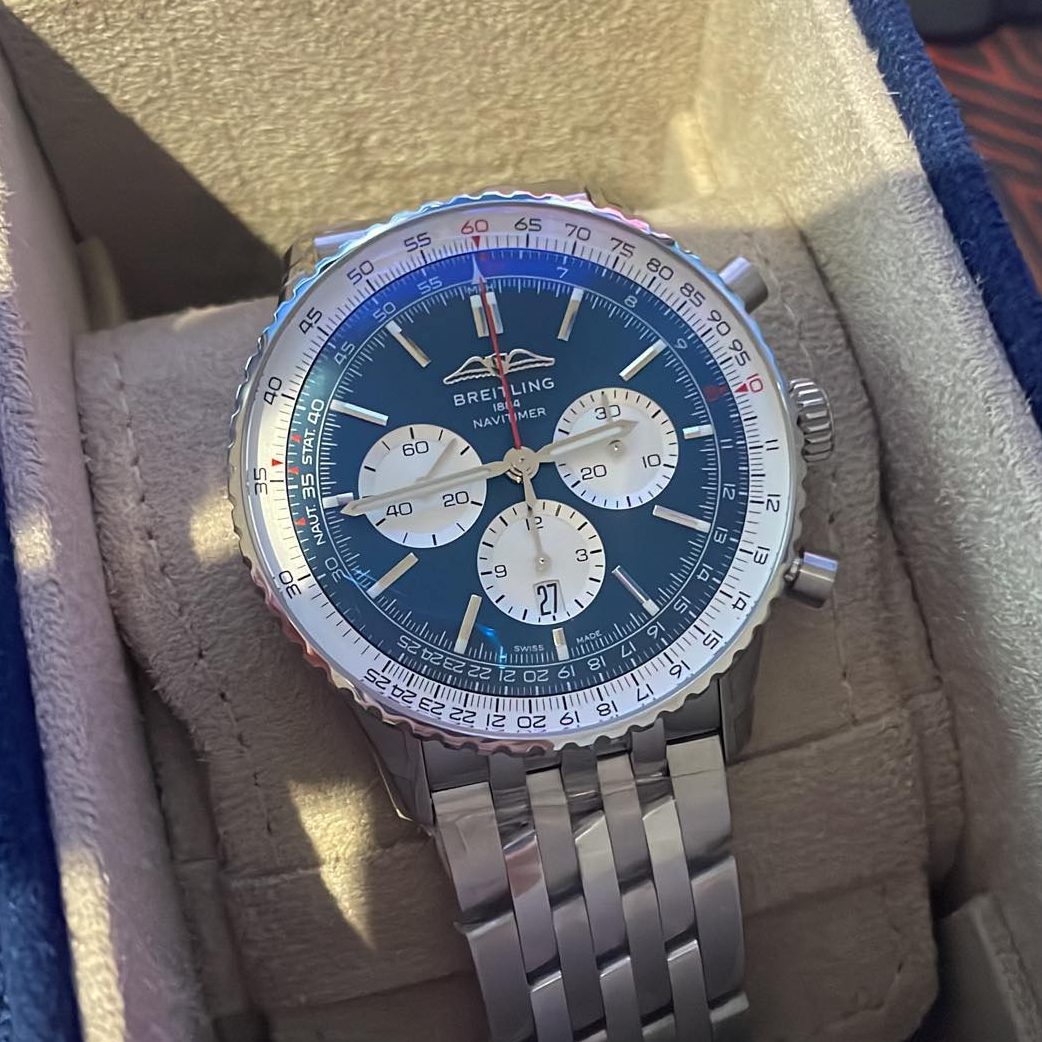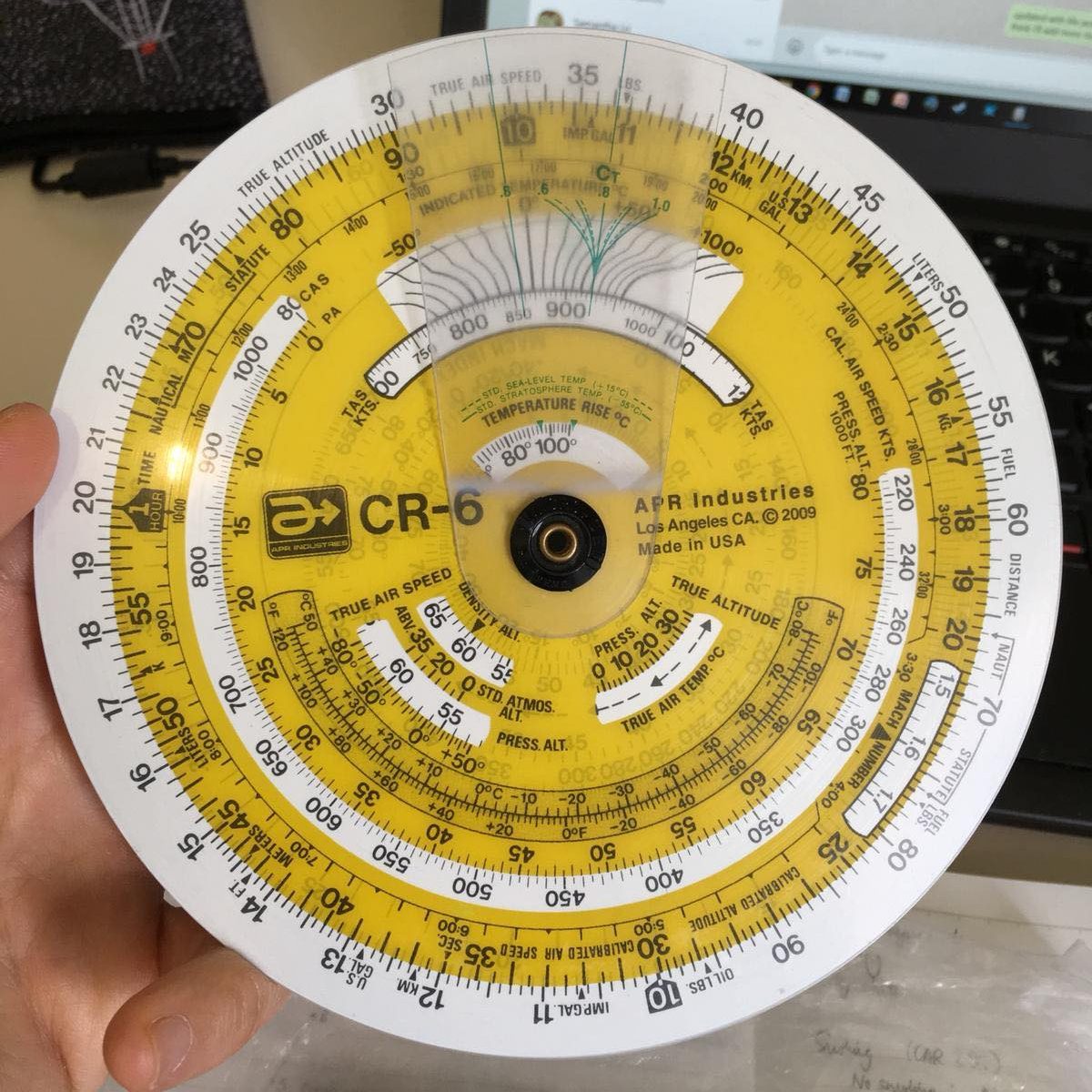Mathematics is obviously one of my interests, but admiring wrist watches is another. There’s something beautiful about the way a mechanical, battery-less contraption built up from miniscule parts could keep time as long as the wearer stays alive (of course taking into account servicing, etc but I digress).
Placing a tool such as a watch on the wrist makes it convenient to tell time, so what if other tools were placed on there?
Of course, in the digital age of the 21st century we already know this first hand: we don’t need to look far to find Apple Watches, FitBits and Garmins on the wrist of nearly every person. They tell more than just the time: they track your personal health, your social media, your geographic location on the earth, and much more.

However, in the history of timekeeping before the current digital age, there was a time when strapping a timekeeper onto the wrist was revolutionary. So when the watch company Breitling slapped an analog (not digital) rotating slide rule calculator on to a wrist watch, it was a mind blowing feature that it became one of the defining characteristics of the brand and to this day, they still produce the Navitimer with the slide rule.

It meant that its users could tell both the time and do multiplicative calculations on the wrist – something incredibly useful for pilots back then and still to this day. My brother is a commercial pilot and in his training program as a cadet he had to learn how to use the analog slide rule to calculate airspeed, rate/time of climb/descent, flight time, distance, fuel consumption, kilometre-nautical mile and gallon-litre fuel conversions – in the unlikely case that the digital instruments fail because you forgot to turn off your phone (just joking about that one).

Now my brother knows how to apply the slide rule calculations in his job whereas if I had to fly the plane you know we’re in deep trouble. To him, the Navitimer watch represents piloting (and indeed they were the original intended market), but to me it means something more mathematical. Read on to find out.
See It In Action
The slide rule works by, as you may have guessed from the name, sliding an outer ring with numbers around an inner ring that also has numbers that are spaced quite unevenly – then somehow you know the result of multiplying two numbers, or the result of dividing two numbers.
Here’s some examples:

- We place the outer “30” above the inner red “10”. This sets our calculator in the mode \(\times 3 \times 10^k\) where \(k\) is some integer that we need to use number sense to work out.
- For sake of example, say I want to find out what \(7 \times 3\) is, then I scan my eyes to the inner “7”, and the answer is on the outer ring: “21”.
Since kilometres to miles calculations are just multiplication, the slide rule is able give us a conversion too!

Say I want to convert 15 statute miles to kilometres: I place the outer “15” above the “STAT” arrow, and read off the answer above the “KM” arrow, so 15 statute miles is about 24 kilometres. Turns out that 13 nautical miles is also about 24 kilometres from this picture!
These are just two examples that this nifty tool can do. Notice the red arrows on the number “36” – if you’ve done enough conversions between kilometres per hour and metres per second, you’ll know that one just needs to either multiply or divide by 3.6, which this slide rule can do! Useful for pilots!
The watch also has a chronograph, i.e. basically a stopwatch – which will be useful for any calculations relying on seconds!
So How Does It All Work?
Logarithms are the reason why this tool works, and also why the numbers are spaced around the ring unevenly.
Recall that \(\log_{10}(x)\) is a function with domain \((0, \infty)\) and range \((-\infty, \infty)\). It is also the inverse function of the exponential function \(10^x\) which has domain \((-\infty, \infty)\) and range \((0, \infty)\).
In proper function language, this can be restated as: \[\log_{10}: (0, \infty) \rightarrow (-\infty, \infty)\] is a bijection, with inverse: \[ 10^{\bullet}: (-\infty, \infty) \rightarrow (0, \infty) \]
Turns out, these functions preserve the operation of multiplication on the set \((0, \infty)\) and the operation of addition on the set \((-\infty, \infty)\), specifically this means:
\[ \log_{10}(a \times b) = \log_{10}(a) + \log_{10}(b) \]
In high school we know these as the logarithm laws. In the study of group theory, we study special types of functions that do this called homomorphisms, and the bijective ones (those with inverse functions) are called isomorphisms. What the isomorphism here tells us is that the set \((0, \infty)\) under multiplication is actually exactly the same as the set \((-\infty, \infty)\) under addition!
The implication of this means that multiplication of real numbers can be solved by taking their logarithms and adding them instead.
Since moving the slide rule around creates an additive offset, this action of sliding the ruler is acting as the operation of addition. The weird placement of the numbers as the scale is due to the uneven spread of powers of \(10^k\) for values of \(k\) in an arithmetic sequence, i.e. with common difference. Notice also how there’s no number 0 on the slide rule – that’s because it’s not in the set we are doing multiplication with: \((0, \infty)\)!

Where Can I Get One?!
Breitling Navitimer
Of course, the iconic number one pick is the Breitling Navitimer but they come with a major hit to the wallet.
Thankfully there are cheaper alternatives, and here’s a list of them with the slide rule:
Sinn 903
In the 1970’s to early 1980’s, the implementation of quartz technology into watches made timekeeping cheap and more accurate than their mechanical cousins. This actually annihilated many watch making companies, and even Breitling felt the pressure – so much so they sold the rights to the Navitimer design to German brand Sinn. With those rights, they now produce the Sinn 903 watch which looks identical to the Navitimer at almost half the market price.
https://www.definewatches.com.au/shop/sinn/903-st-b-e
Seiko Flightmaster and Citizen Nighthawk
Both Seiko and Citizen produce Quartz slide rule watches that are a lot more affordable than the Breitling or the Sinn mechanical versions. A quick google search on the market could yield some options to purchase!
In the off chance you want to spend about $1.5 million on a Richard Mille RM 039 AVIATION E6-B tourbillon, there’s also that option too…

Leave a Reply